Table of Contents
FUN FACTS
Biography
- According to the World Economic Forum, Iceland boasts the smallest gender pay gap in the world.
- There are no McDonald's on the entire island, after the company closed its last outlet in 2009.
- Iceland is one of the few countries in the world with no standing army. Nevertheless, it has been a NATO member since 1949.
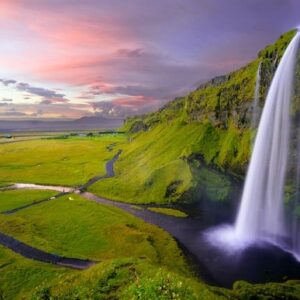
- Country:
Republic of Iceland
- Population:
366,000 inhabitants
- Capital:
Reykjavik
- Area:
103,125 km2 (39,817 sq mi)
- Independence:
17 June, 1944
We explain everything about Iceland, and its physical and cultural characteristics. In addition, we explore its economy, religion and history.
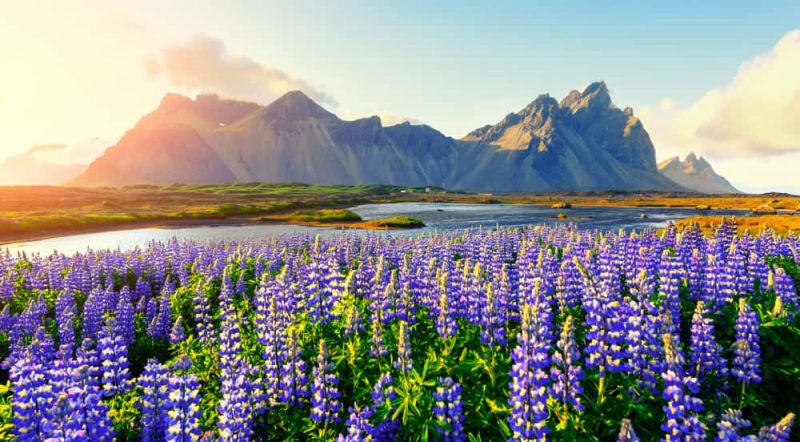
Iceland
Iceland is a sovereign state officially known as the Republic of Iceland. It is a vast island situated in the Atlantic Ocean, between Greenland and Northern Europe. It ranks as the seventeenth largest country in Europe, yet remains one of the least populated, with only 366,000 inhabitants.
Due to its position on the Mid-Atlantic Ridge, volcanic eruptions and earthquakes are common occurrences in Iceland.
Its form of government is a parliamentary republic, with Reykjavik as its capital city, known for being one of the least populated capitals in the world.
Why is it called "Iceland"? The name Iceland comes from the Old Norse word ísland, meaning "land of ice". However, the first name of the territory was Snaeland ("land of snow"), given by the Faroese Viking explorer Naddoddr.
The island was later named Garoarshólmur ("Gardar’s Island"), until the Scandinavian explorer Flóki Vilgerðarson reached its shores in the 9th century. He was responsible for giving it the name of "Iceland".
FUN FACTS
- According to the World Economic Forum, Iceland boasts the smallest gender pay gap in the world.
- There are no McDonald's on the entire island, after the company closed its last outlet in 2009.
- Iceland is one of the few countries in the world with no standing army. Nevertheless, it has been a NATO member since 1949.
- See also: North Pole
Characteristics of Iceland
Some distinguishing features of Iceland include:
- It has a population of 366,000 inhabitants.
- Its surface area is 103,125 square km (39,82 square miles), representing a population density of only 3.5 inhabitants per square kilometer.
- Its capital city is Reykjavik.
- The prevailing climate is polar tundra.
- The predominant relief is mountainous, featuring an abundance of active volcanoes.
- The official language is Icelandic.
- The prevailing religion is Protestant Christianity.
- Its currency is the Icelandic króna.
- The main economic activities are fishing, industry, energy production, and tourism.
- It is one of the favorite destinations among tourists from all over the world, who visit the country to see the Northern Lights.
Size, population and capital of Iceland
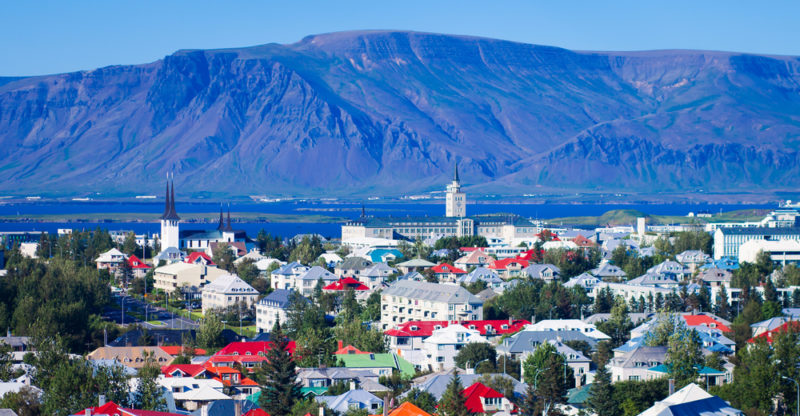
Iceland sprawls over 103,125 square kilometers (39,82 square miles), harboring a population of 366,000, which renders it one of the least populated countries in Europe and the world. Its population density is 3.5 inhabitants per square kilometer.
Iceland is divided into 8 administrative regions made up of 72 municipalities. The Reykjavik region, housing the capital, is the most populous, accounting for over 64% of the total population of the country. The eastern, southern, northwestern, and Westfjords regions are marked by demographic voids, with population densities less than one person per square kilometer.
The capital of Iceland is the city of Reykjavik. It has a population of 133,000 inhabitants, which represents 36.3% of the country's total population.
Climate, relief and hydrography of Iceland
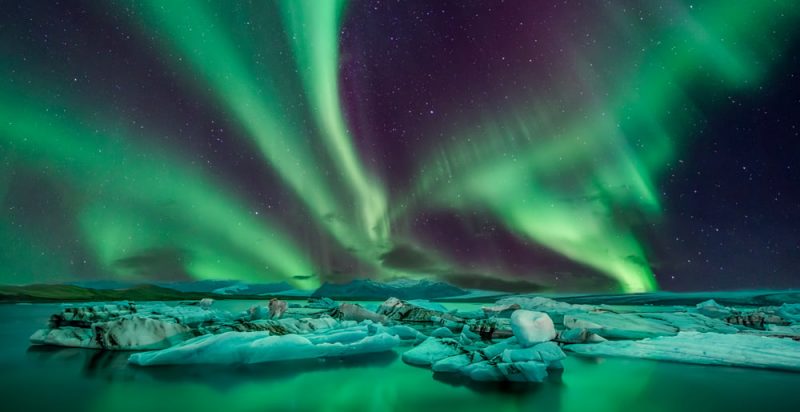
Iceland's territory is predominantly characterized by a polar tundra climate, wherein no month exceeds an average temperature of 10°C.
Most of the soil is covered with snow and ice throughout the year, with glaciers occupying over 10% of the country's surface area. One of the most peculiar features of the island is that in winter it receives roughly four hours of sunlight per day, and virtually ceaseless daylight throughout the two-month summer season.
Located on the Mid-Atlantic Ridge, volcanoes dominate Iceland's landscape. The Highland of Iceland comprises an extensive area of volcanoes and glaciers, home to the Hvannadalshnúkur volcano, the nation's highest peak at 2,119 meters. The area is also home to the Vatnajökull glacier, Europe's second largest. It covers an area of over 8,000 square kilometers, which accounts for 8% of the country's total surface area.
Iceland's hydrography is marked by the presence of short rivers, which remain frozen most of the year, and in summer they thaw and increase their volume. The Thjorsa, stretching 230 kilometers, stands as the longest river. Icelandic hydrography also includes glacial and volcanic lakes scattered across the island, though none of significant size.
The flora and fauna of Iceland are adapted to the predominantly low temperatures throughout most of the year. The country is a tundra biome, characterized by a virtual absence of trees: only vegetation adapted to permafrost (soils permanently covered with ice) thrive. The animals found in Iceland are also adapted to these conditions, with main species including reindeer, foxes, marine animals like whales, and hundreds of bird species.
Culture of Iceland
The official language of Iceland is Icelandic, a North Germanic language closely related to Faroese and West Norwegian dialects. In religious matters, there is complete freedom of religion, although Protestantism is the state church, embraced by the majority of the population.
In music, the country plays an important role in the Nordic music industry, with bands such as The Sugarcubes, Sigúr Ros and the performer Björk, among others. In painting, notable figures include Einar Hákonarson and Guðmundur Guðmundsson, popularly known as Erró. In the literary sphere, Halldór Laxness is one of the country's most renowned writers, winner of the Nobel Prize in Literature in 1955.
Icelandic gastronomy is a key aspect of its culture, with a predominance of seafood and fish. Some typical dishes are hákarl, made from shark meat, and plokkfiskur, made with cod.
National symbols of Iceland
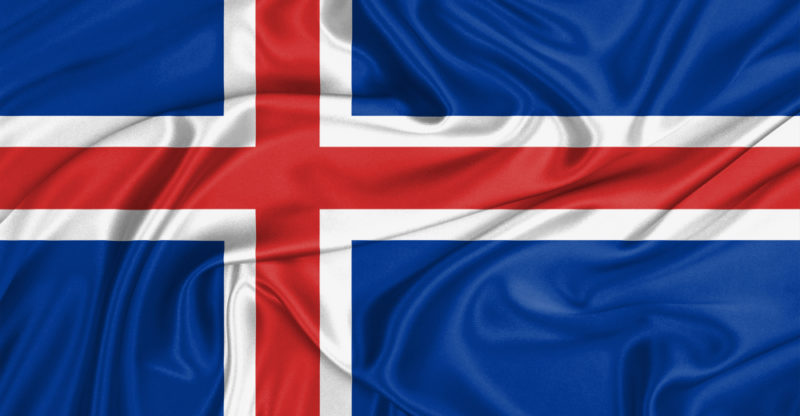
The national symbols of Iceland are:
- Flag of Iceland. It was proclaimed as the official flag following the country’s independence in 1944. It is composed of a red Scandinavian cross with white borders on a dark blue background.
- National anthem of Iceland. Known as Lofsöngur, its lyrics were written by Matthías Jochumsson and its music by Sveinbjörn Sveinbjörnsson. It has been used as the official anthem since 1944.
- Coat of arms of Iceland. It bears the shape and colors of the flag of Iceland set upon a block of lava. This block is encircled by a bull, an eagle, a dragon and a giant. It was adopted in 1944.
History of Iceland
The first known Icelandic settler was Ingólfur Arnarson, who established himself in the territory of present-day Reykjavík in the year 874. He was later followed by numerous Nordic settlers and their Irish slaves. This newly formed community was evangelized around the year 1000, and became part of the Norwegian crown in 1262. It then passed into the hands of Denmark-Norway at the end of the 14th century, with the establishment of the Kalmar Union.
During the following centuries Iceland was one of the poorest nations in Europe. In the early 1800s, the Napoleonic Wars divided Denmark and Norway via the Treaty of Kiel, leaving Iceland Under Danish rule. Living conditions deteriorated following volcanic eruptions and local epidemics, prompting mass emigration throughout the century, mainly to Canada.
Subsequently, the Icelandic Independence Movement emerged, led by Jón Sigurösson. This movement secured a constitution for the island in 1874 and limited self-government, which expanded in 1904.
In 1918, Iceland declared itself a sovereign nation, under the name of the Kingdom of Iceland, maintaining a personal union with Denmark, to the extent that Danish embassies displayed the coat of arms of both nations. In 1943, Icelanders voted in a public referendum to end the monarchy and establish a Republic, whose first president was Sveinn Björnsson.
Economic activities of Iceland

At present, Iceland boasts one of the highest nominal GDP per capita and the third highest Human Development Index (HDI) in the world.
The main economic activities include:
- Fishing, which accounts for 7% of the workforce and contributes 40% of operating revenues.
- Geothermal and hydroelectric power production, making Iceland the world's leading producer of electric power per capita.
- Industry, mainly food processing and the manufacturing of aluminum and iron.
- Tourism, attracting thousands to visit the glaciers, volcanoes, hot springs, waterfalls, and the Northern Lights.
Iceland’s primary trade partners are the Netherlands, Spain, Norway, and the United Kingdom. Its currency is the Icelandic króna.
Northern Lights
The Northern Lights, or Aurora Borealis, constitute one of Iceland's main tourist attractions. They occur when charged particles from the sun, mainly electrons and protons, collide with gases in Earth's atmosphere, producing colorful lights in the sky. Iceland stands as one of the best places in the world to witness the Northern Lights due to its geographical location and minimal light pollution. The best time to see the northern lights is during the winter months, when nights are longer and darker.
Was this information useful to you?
Yes NoThank you for visiting us :)